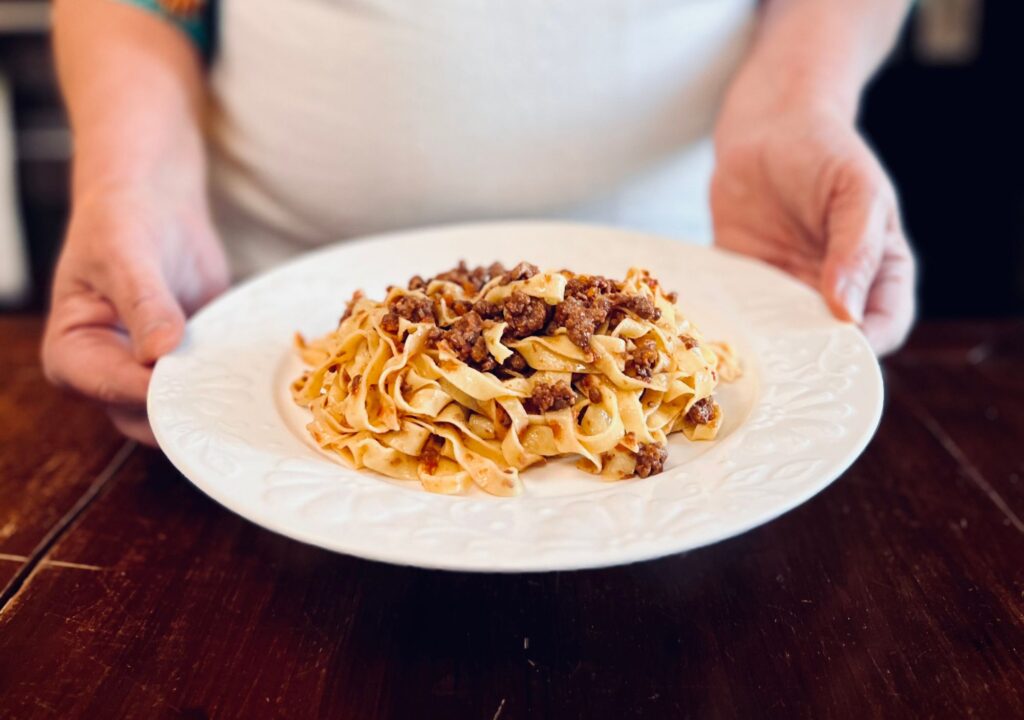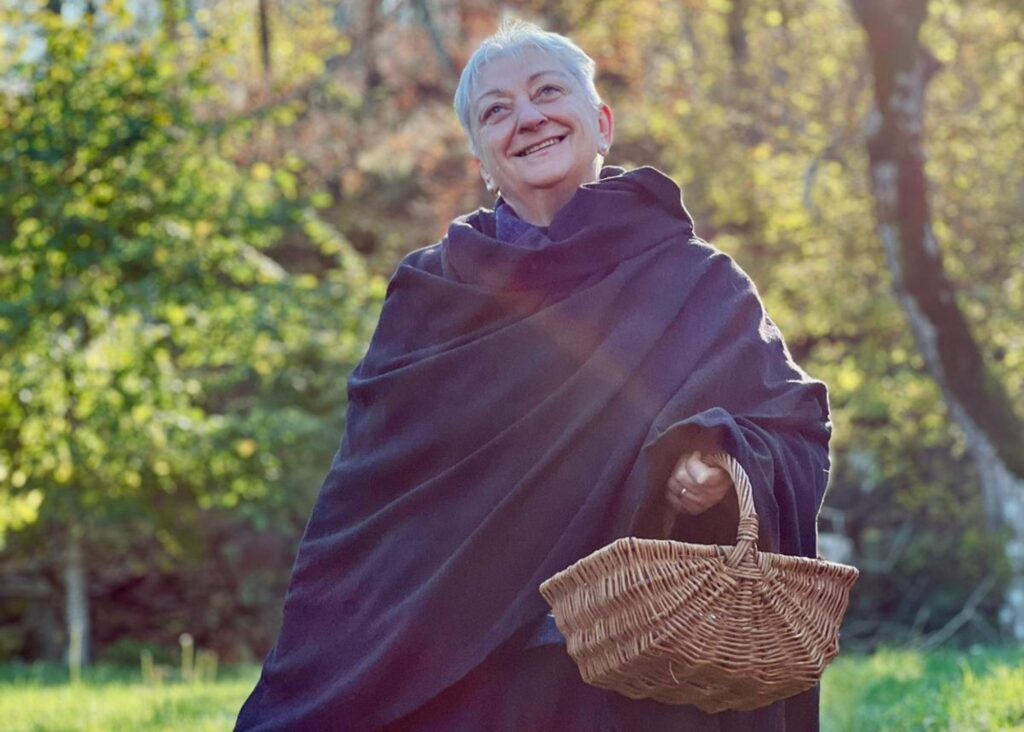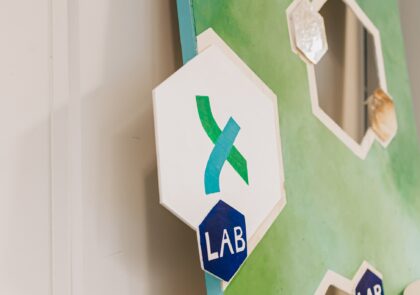
Can a plate of handmade pasta inspire travel? Can the sound of a rolling pin evoke memory, or shape one’s sense of place? These are some of the questions explored in a recent research at the LAB University of Applied Sciences, where the intersection of storytelling, food, and sustainable tourism became the focus of a unique audiovisual project: Bolognese.
Authors: Ruggero Pini and Johanna Heinonen
From audiovisual narrative to applied research
The master’s thesis Food storytelling and the Bolognese project: audience engagement and tourism promotion in gastronomic narratives (Pini 2025) investigates how creative media can promote cultural sustainability in tourism. Developed by filmmaker and digital strategist Ruggero Pini, the research uses Bolognese (Pini & Spisni 2025), a short documentary and series of shorter videos in social media, as a case study to examine how emotionally rich food stories can connect with digital audiences and inspire gastronomic travel.
The project pays tribute to Bologna’s culinary heritage through the gestures and wisdom of TV chef Alessandra Spisni. More than a showcase of regional food culture, the project was designed as a multisensory experience, combining long-form documentary aesthetics with short-form content formats such as Instagram reels and behind-the-scenes posts. The aim was to explore how narrative elements like authenticity, sensory detail, and memory trigger emotional engagement and influence the viewer’s perception of place.
Designing a multisensory experience
In Bolognese, long-form documentary aesthetics were intentionally blended with short-form formats such as Instagram reels and behind-the-scenes content to create a multisensory and emotionally engaging narrative experience. The project was filmed in a rural kitchen in the Bologna Apennines, with deliberate attention to sensory detail: the rhythmic sound of the rolling pin, the textures of handmade dough, and the ambient noises of the countryside were all used to immerse the viewer. This sensory-rich approach was not merely stylistic but rooted in the theoretical foundation of narrative transportation and audience reception theory, where emotional resonance and visual immersion are known to increase engagement and influence perception (Green & Brock 2000; Chronis 2012).
Drawing on audiovisual storytelling strategies observed in productions like Chef’s Table and A Bite of China (Liberato et al., 2020; Xu & Kim 2019), the Bolognese project utilized cinematic techniques and intimate character-driven storytelling to connect audiences with the cultural meaning of handmade cuisine. The narrative construction was also informed by a broader literature on authenticity, place-making, and digital engagement, highlighting how authenticity and emotional credibility are often mediated through aesthetic cues and pacing (Kim & Iwashita 2016; Leer & Povlsen 2016). The thesis emphasizes that these aesthetic and narrative elements, especially when distributed across multiple platforms, play a vital role in fostering emotional bonds, shaping destination appeal, and ultimately, motivating travel.
Audience reactions and emotional impact
To evaluate the impact of Bolognese, the thesis conducted a qualitative analysis of 133 online viewer comments and two interviews with regional tourism stakeholders. The results revealed strong emotional responses: viewers recalled personal memories of family meals, grandparents, and travel experiences. Many expressed a renewed desire to visit Bologna not as spectators, but as cultural participants.
What emerged was a pattern of dialogic engagement. Viewers responded to the story with their own memories, extended the narrative through comments, and became active contributors to the cultural conversation. This reflects how food storytelling, when designed to be emotionally evocative, can foster digital place-making and co-creation of meaning (Tussyadiah et al. 2011).
From storytelling to destination strategy
Insights from institutional interviews supported the idea that narrative-driven media can function as a soft power tool in regional promotion. Stakeholders viewed Bolognese as cultural mediation helping preserve traditions, empower artisans, and redirect tourism flows toward more authentic, decentralised experiences (Richards 2021). This aligns with current strategies in sustainable tourism, where storytelling is increasingly used to foster deeper connections between visitors and local communities.

Image 1. TV chef Alessandra Spisni during filming in the Bologna Apennines (Pini 2025)
Beyond the thesis: next steps
The Bolognese project serves as a prototype for the use of emotionally grounded food storytelling in sustainable tourism promotion. It brings together creative direction, digital media strategy, and academic research into a cohesive framework. By highlighting how sensory narratives can foster emotional bonds and travel motivation, the thesis contributes both theoretical insight and practical guidance for tourism professionals and content creators.
Looking ahead, the methodology and insights from this research offer potential for adaptation across regions and platforms, especially as destinations seek more meaningful ways to engage visitors through culture and story. This project has been pivotal also in Pini’s professional development bringing together creative direction, digital engagement, and academic research into one cohesive methodology.
References
Chronis, A. 2012. Between place and story: Gettysburg as tourism imaginary. Annals of Tourism Research. Vol. 39 (4), 1797-1816.
Green, M.C. & Brock, T.C. 2000. The role of transportation in the persuasiveness of public narratives. Journal of Personality and Social Psychology. Vol. 79(5), 701-721. Cited 21 May 2025. Available at https://doi.org/10.1037/0022-3514.79.5.701
Kim, S. & Iwashita, C. 2016. Cooking Identity and Food Tourism: The Case of Japanese Udon Noodles. Tourism Recreation Research. Vol. 41, 89-100. Cited 21 May 2025. Available at https://doi.org/10.1080/02508281.2016.1111976
Leer, J. & Povlsen, K. K. 2016. Food and Media: Practices, Distinctions, and Heterotopias. Routledge.
Liberato, P., Mendes, T., Barreira, H. & Liberato, D. 2020. Food Media Experience and Its Impact on Tourism Destinations: The Chef’s Table Affair. In Abreau, A., Liberato, D., Gonzalez, E.A. & Ojeda H.C.G (eds). Advances in Tourism, Technology and Systems. Selected Papers from ICOTTS20, Volume 2. Smart Innovation, Systems and Technologies, vol. 209. 584-594. Cited 21 May 2025. Available at https://doi.org/10.1007/978-981-33-4260-6_50
Pini, R. 2025. Food storytelling and the Bolognese project: audience engagement and tourism promotion in gastronomic narratives. Master’s thesis. LAB University of Applied Sciences, Faculty of Business. Cited 10 May 2025. Available at https://urn.fi/URN:NBN:fi:amk-2025050910302
Pini, R. & Spisni, A. 2025. Bolognese: A story of tradition, memory, and the art of handmade pasta. Food Storytelling. Cited 6 June 2025. Available at https://foodstorytelling.net/bolognese
Richards, G. 2021. Evolving research perspectives on food and gastronomic experiences in tourism. International Journal of Contemporary Hospitality Management. Vol. 33(3), 1037-1058. Cited 21 May 2025. Available at https://doi.org/10.1108/IJCHM-10-2020-1217
Tussyadiah, I. P., Park, S. & Fesenmaier, D. R. 2011. Assessing the effectiveness of consumer narratives for destination marketing. Journal of Hospitality & Tourism Research. Vol. 35(1), 64-78. Cited 21 May 2025. Available at https://doi.org/10.1177/109634801038459
Xu, M., & Kim, S. 2019. Watching A Bite of China: The Impact of a Food and Culture Documentary on Pre-Visit Perceptions and Expectations. In Park, E., Kim, S. & Yeoman, I. (eds.). Food Tourism in Asia. Singapore: Springer. 197-211. Cited 21 May 2025. Available at https://doi.org/10.1007/978-981-13-3624-9_12
Authors
Ruggero Pini is a filmmaker and food storyteller with a background in digital strategy and documentary production. He is a certified specialist in the promotion of Emilia-Romagna’s food and wine heritage, and focuses on emotionally driven narratives that connect audiences with culinary tradition, culture, and place.
Johanna Heinonen is a Senior Lecturer and RDI Specialist at LAB University of Applied Sciences. She is particularly passionate about studying how communication can be improved in terms of sales and effectiveness as well as caring and memory imprint.
Illustration: Tagliatelle al ragù bolognese made by Alessandra Spisni, filmed during the Bolognese shoot (Pini 2025).
Reference to this article
Pini, R. & Heinonen, J. 2025. Bolognese: A story worth traveling for – The power of food storytelling in sustainable tourism. LAB Pro. Cited and date of citation. Available at https://www.labopen.fi/en/lab-pro/bolognese-a-story-worth-traveling-for-the-power-of-food-storytelling-in-sustainable-tourism/






